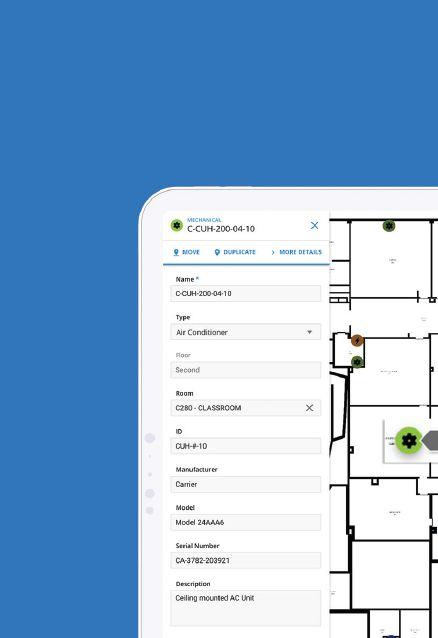
52 minute read
Resource
TRANSITIONING TO A GREEN ECONOMY
Low carbon, resource effi cient, socially inclusive1
Advertisement
— Peter Ankerstjerne, MBA, COP, IFMA Fellow, Chair, IFMA Global Board of Directors
UNITED STATES: New federal and state action to support energy-effi cient buildings, create jobs, lower costs2
In January 2022, the U.S. government announced the launch of the Building Performance Standards Coalition, a fi rstof-its-kind partnership between 33 U.S. state and local governments dedicated to delivering cleaner, healthier, more aff ordable buildings.
— Don Gilpin, IFMA President and CEO
Representing more than 15 billion square feet of applicable fl oor space, the partnership facilitates new commitments to design and implement building performance standards at the state and local level, create good-paying union jobs, lower energy bills for consumers, keep residents and workers safe from harmful pollution, and cut emissions from the building sector.
Founded on a commitment to work with stakeholders, especially frontline communities, to address health, energy affordability and emissions reductions goals across the buildings sector, the Coalition has the ultimate goal of advancing legislation or regulation in each of the represented jurisdictions by Earth Day 2024.
The U.S. Department of Energy (DOE) and the Environmental Protection Agency (EPA) also announced a series of actions to kickstart building performance standards and policy innovation across the country. Helping jurisdictions with analysis support, policy design and implementation tools, the DOE will share best practices for state and local governments that are adopting building performance standards and the EPA will enhance ENERGY STAR Portfolio Manager® to provide new policy tracking and reporting capability.
GLOBALLY: Adopting the Glasgow Climate Pact, nations aim to turn the 2020s into a decade of climate action and support3
In November 2021, every party at COP26 — representing almost 200 countries — agreed to the Glasgow Climate Pact, which will accelerate action on climate this decade and completes the Paris Rulebook.
COP26 was the largest to date, with 120 world leaders and 50,000 registered delegates.
• More than 90 percent of world GDP is now covered by net zero commitments.
• There was a marked commitment to protect precious natural habitats, with 91 percent of the world’s forests covered by a pledge from 137 countries to end deforestation by 2030.
• The cop26 declaration on accelerating the transition to 100 percent zero emission cars and vans brought together more than 35 countries, six major carmakers, 43 cities, states and regions, 28 fl eet owners, and 15 fi nancial institutions and investors committing to work together to achieve this goal. • More than 100 countries signed the Global Methane Pledge to reduce global methane emissions by 30 percent by 2030. This includes six of the world’s top 10 methane emitters: United States,
Brazil, EU, Indonesia, Pakistan and Argentina.
• Launching the Breakthrough Agenda at COP26, many countries committed to work together this decade to accelerate development and deployment of the clean technologies and sustainable solutions needed to meet Paris Agreement goals.4
Sources: 1 United Nations Environment Programme (UNEP), unep.org 2 FACT SHEET: Biden-Harris Administration Launches Coalition of
States and Local Governments, bit.ly/3rWRPc2 3 COP26 The Glasgow Climate Pact, bit.ly/3oYrBUF 4 COP26 World Leaders Summit — Statement on the Breakthrough
Agenda — GOV.UK, bit.ly/3I5fyfH
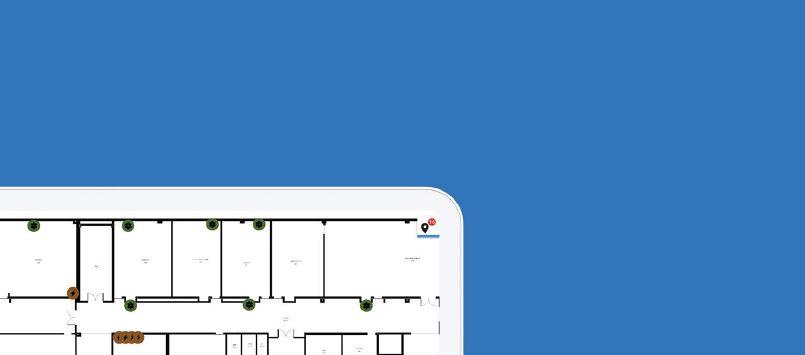

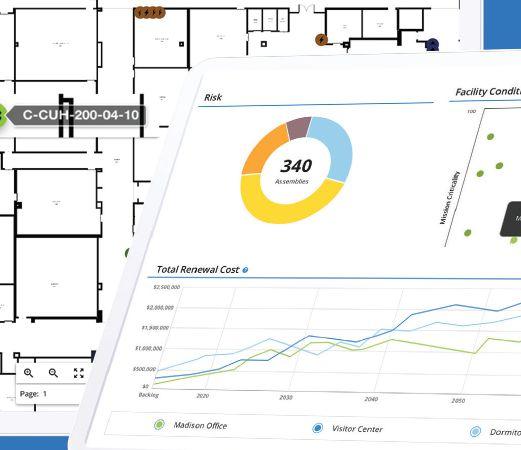
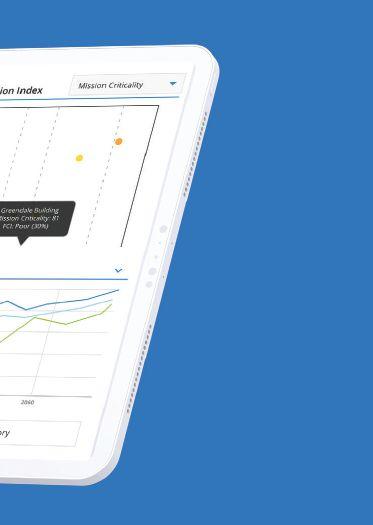

Health care is a unique industry in that operational staff and facility management staff must converge to ensure patient care is met and regulatory compliance is fulfi lled. Today, the FM team is challenged in ways that have not been seen in a generation. The COVID-19 pandemic has driven the health care industry to rely upon a digital services model to ensure that physicians have safe interactions with their patients and provide a healthy environment for in-house staff and patients alike.
According to the PriceWaterhouseCooper (PWC) 2021 survey on health care trends, new technologies such as mobile applications have increased venture capital by 103 percent. That same study also found that more than 60 percent of their respondents favored the use of new technologies to advance patient care. The progression and implementation of 5G allow for big data, mobile devices and the Industrial Internet of Things to assist with the decision-making and support capital and operational initiatives.
The advent of 5G will allow IoT to become mainstream, further developing the ideals of a systems-centric approach to patient service delivery. Using a systems approach to patient care would start at the dispatch with real-time location services used for mobile handsets reducing the location to near meters rather than multikilometer distances that have been used from radio tower (Lakkis & Elshakankiri, 2017). Research has evaluated the needs of emergency services using Zigbee Wi-Fi to streamline and reduce traffi c-related delays — eff ectively shortening the “golden hour.”
The systems approach should not only be used for patient care. Today’s FMs face challenges from environmental to inventory control to ensure that the hospital meets capital and operational expense initiatives. While HVAC/environmental control has long been a staple of operational expense control, other new technologies exist within the realm of automation including RFID networks, RTLS and sanitization monitoring.
As with any new technology or innovation, there will be issues, including vulnerabilities. These include weaknesses in devices, risks from fi rmware, software (program) and even the resilience of the hardware. However, at its core is the lack of general understanding and consensus of how to manage such a network of converged technologies. Facilities must be able to meanstest the technology and partner with an equally established vendor to manage the operational life cycle.
With the pandemic driving hospital systems to reduce their floor space to balance the virtual delivery model, FM staff will be challenged in new ways, including cybersecurity. Forescout’s 2020 survey on cybersecurity evaluated several sectors of the economy from fi nance, health care to public/government. What was found was that at the highest risk for cyber intrusion was access control and HVAC automated systems — both ranking No. 2 in all sectors, only being surpassed by HL7 gateways and pneumatic tube systems health care. The question becomes who is responsible for safeguarding these integrated systems, and what should facilities do?
Figure 1 depicts an integrated technology approach that provides a sustainable, secure converged network that allows both IT departments to become fully vested partners of facilities outside of their current role of protecting IT assets.
Convergence of the corporate (IT) and operational (OT) networks requires changes and updates to the hospital’s delivery systems and the vendors that support them. Trades play a specifi c and integral role in supporting the implementation of the network. The building automation industry has a unique position as this trades

Figure 1
area specializes in operational technologies. Unfortunately, due to the fast-tracked use of IoT, OEM manufacturers have developed methodologies to deploy their systems, fi lling the technology gap that their representatives have left. Therefore, the building automation industry, like their health care customers, must make changes to support such opportunities.
ISSUE ONE:
AN INDUSTRY IN TRANSITION To be competitive, midsized to large organizations with building automation divisions could update their go-to-market strategy to include integrated infrastructure. However, to be successful, these organizations must modify their strategic approach to today’s industry to adopt a new mentality as a “master integrator.” There are three key areas where the industry must change — networking, secure design and training.
Building automation organizations have been solely reliant upon a service model that supports the core competencies of the trade, avoiding regulatory requirements; but as technology advances, IT/OT convergence will include big data and artifi cial intelligence. Service providers must treat this opportunity as a competitive advantage and distinguish themselves as a technology organization, not a division of a mechanical contractor. This advantage, however, is incumbent upon making organizational structure changes, including training and education.
The next generation building automation organization would deploy a team managed within the regional or national accounts division to unify currently siloed interdivisions. The team would include specialists in the core competencies of building automation, video surveillance, access control and fi re/life safety. In addition, to assist with today’s IoT challenges, a network engineer would be added to help with deployment and assist with network strategies, coordination and management of the software development life cycle, including the deployment and commissioning. This team, being diverse, can either be virtual or collocated.
Along with creating a network integration team, the organization must identify its security policies. The goal of establishing a standard is to make governance around secure engineering, programming and commissioning that insists upon application-based security features. Security policies should be unique to the building automation division and separate from the information technology departments’ corporate security policies required for corporate networks. This is partly because programmable IoT devices are susceptible to zero-day vulnerabilities and other IP-based vulnerabilities, including those that aff ect the confi dentiality, integrity and availability of the device, and the network itself. Also, a fundamental way of hardening software is through repeatability. Finally, standardization in many cases, including having a policy that dictates how programs are developed mitigates risk, and threat exposure when deployed.
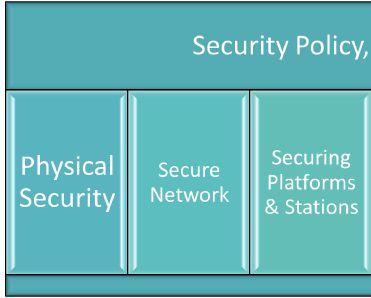
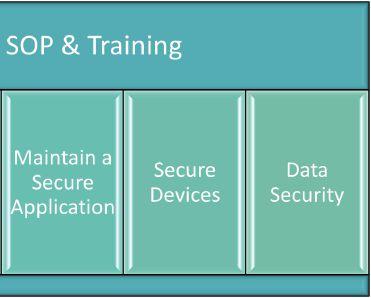
ISSUE TWO:
NECESSARY ORGANIZATIONAL CHANGES REQUIRED The investment and use of IoT within the health care industry is a choice to provide the best patient care. Integrated systems achieve organizational success through increasing profi ts from patient referrals and cost savings initiatives from operational management. While the long-standing focus of controlling operational expenses has been through energy management of the mechanical systems, hospital systems can now provide comprehensive services through connected medical devices; thus, further lowering operating fees, real estate costs and increasing the return on investment. Like their building automation partners, the hospital system’s FM team must make structural and process changes to their delivery methods.
Investment in training and coordination between divisions makes the service model move toward the information technology division. The convergence of operational technology with information technology also has lent itself to the confl uence of personnel. Operational staff must be technologically savvy and maintain an active awareness of the systems they serve or control, including big data devices like that of real-time location services devices to connected medical devices. Even with troubleshooting, skilled labor must be capable of troubleshooting electronics as well as mechanical systems.


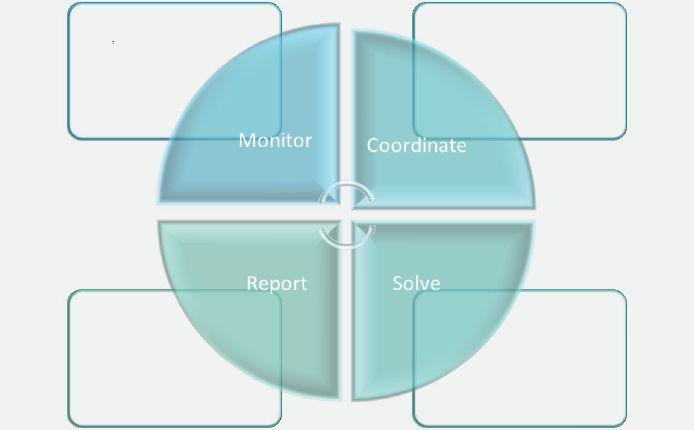
• Monitors existing conditions and analyzing IoT sensors for preventive service measures
• Assist with regulatory reporting utilizing data analytics and other data • Provide interdivisional coordination to negotiate found problems
• Validate and verify resolutions of problems, and preventive maintenance related outcomes
While the Internet of Things has similarities to IT, operational technologies remain a gaggle of legacy technologies such as Modbus RTU, LON and BACnet MS/TP. These protocols allow for “open” integration but are limited to their own specifi c set of constraints during deployment. Thus, while the transition to a fully deployed IP-based IoT and wireless 5G is integrated, the existing infrastructure must depend upon long-standing techniques to prevent 21st century risks that include cybercriminals. Robust investment in IoT is a must, as is the procurement and sustainable management practice of protecting such an integrated system through IoT security processes — all rooted in good security practices. This will require the hospital system to establish a project selection methodology that takes these risks as part of the vendor selection process.
IoT’s eff ects will continue to trend toward full convergence between operational technologies and information technologies. As a result, the end user and the technology providers must be prepared to move technology from proprietary networks such as TIA-485 (BACnet) and (H)ealth (L)evel 7 to IP-based devices supported singularly by 5G. This means that as new technology develops and certainly matures, health care systems must identify whether they are cost-benefi cial and assist with the mitigation of risks as part of their operational model. As part of the analysis, new jobs, new processes and federal regulatory fi nal rules on patient information protection must also be considered. To further challenge the service partnership, the service organization must develop a diverse technology team in handling the secure design, integration, deployment and support of provisioning big data and the complex nature of the infrastructure — moving from a construction model to a hybrid model that includes activities of foundationally IT-centric tasks including DevOps, network engineering and cybersecurity. In the end, it will be incumbent upon the service provider to change their service model to ensure they can be a supporting voice when health systems choose to deploy IoT. As a result, the service provider will strengthen their partnership while shifting the manufacturer’s strategic initiatives from an executing role to supporting one, thus increasing direct revenue streams for the service provider.
With both the health care industry and supporting supply industries, IoT is a game changer. By providing an outcome-based approach, IoT has allowed the streamlining of the service model to use big data to evaluate and validate project fi nancials; the industry has become more effi cient. Unlike rudimentary technologies from the 1980s and 90s, the use of IoT has presented opportunities to small and medium-sized organizations to maximize operational and capital expenditures. However, it will be up to the FM staff of each health care system to establish both the mode and means of integration, deployment and sustainability.
FMJ
Joshua Bosell, MSIT, PMP is the strategic project manager for Emcor Services in Indianapolis, Indiana, USA. With more than 15 years of experience in IoT and the health care sector, he specializes in converged networks, IoT integrations and migrations.
Mahamat Idriss Hassan, CFM Dubai, United Arab Emirates Magdalena De Guzman, CFM Parañaque , Me, Philippines Steve Madson, CFM Hermitage, California Joshua Fowler, CFM, FMP Salt Lake City, Utah
Paramasivam Karuppannan, CFM, Rawang, Se, Malaysia David Duncan, CFM Tracy, California Stephanie Howard, CFM Irving, Texas Carolyn Price, CFM Tulsa, Oklahoma Mark Matthews, CFM Dubai, United Arab Emirates, Georges Dionne, CFM Ottawa, ON, Canada Suzi Cho-Brett, CFM, FMP, SFP Tucson, Arizona Kizhakkekara Boban, CFM Doha, Qatar Firas Eideh, CFM Doha, Qatar Ian Thompson, CFM Cochrane, AL, Canada Sabareesh Nair, CFM Al Wukair, Qatar Hosam Shaltaf, CFM Barwa City, Qatar Ravichandran Ramaswamy, CFM, Dubai, United Arab Emirates Chris Morgan, CFM, FMP, SFP Littleton, Colorado Ramesh Babu Doguparty, CFM Oshawa, ON, Canada Jonathan Shaw, CFM, FMP Port Coquitlam, BC, Canada Vijay Pravin, CFM Doha, Qatar Abdallatef Alsolh, CFM Abu Dhabi, United Arab Emirates
Muhammad Ishaque, CFM Abu Dhabi, United Arab Emirates
Kyle Martin, CFM San Diego, California Matthew Cinelli, CFM, FMP, SFP North Attleboro, Massachusetts Tyler Hersom, CFM San Jose, California Arpit Mathur, CFM, FMP Etobicoke, ON, Canada Mostafa Fathi, CFM Doha, Qatar Michael Baldwin, CFM, FMP Hayward, California
Rashmi KR, FMP, SFP Bangalore, KA, India
Karen Spottswood, FMP, SFP Centreville, Virginia Jomy Jo Jacob, CFM, SFP Dubai, United Arab Emirates Chin Yeoh Lee, FMP, SFP Sungai Petani, Malaysia Xiaoyu Wang, FMP, SFP Beijing, China Angelica Mocanu, FMP, SFP București, Romania Mark Pawlikowski, CFM, SFP San Diego, California Anandha Prakash Sadasivam, CFM, SFP Doha, Qatar Luke Davis, FMP, SFP Old Hickory, Tennessee Max Hildebrandt, SFP Ottawa, ON, Canada Eyad El-Madhoon, SFP Manotick, ON, Canada Nargiz Gasimova, FMP, SFP Baku, Azerbaijan Nicole Lehmann, FMP, SFP Stittsville, ON, Canada Jacob Gossard, FMP, SFP Dublin, California Noel Martin, FMP, SFP Devonshire, Bermuda
Keith Jones, SFP Charlottesville, Virginia Cecilia Horner, SFP Nottingham, Maryland
Hind Aloudah, FMP Riyadh, Saudi Arabia Jennifer Henderson, FMP Alexandria, Virginia Mayowa Omonile, FMP Abuja, Nigeria Edward Cho, FMP Singapore Kwee Lan Geraldine Sim, FMP Singapore Lexuan Chen, FMP Singapore Kok Leong Shawn Yeo, FMP Singapore Yi Ling Low, FMP Singapore Lian AnSoh, FMP Singapore Tian Tian Ng, FMP . Singapore Ming Fei Chua, FMP Singapore Xiaoyin Goh, FMP Singapore Ismail Ismail, FMP Al Ain, United Arab Emirates
Minh Duc Ngo, FMP Singapore Patrick Tan, FMP Singapore Abdulmohsen Alabdulwahab, FMP, Dammam, Saudi Arabia Tameka Barbour, FMP Ft. Washington, Maryland Beatrice Powell, FMP Kitchener, ON, Canada Rajneesh Thakur, FMP Mohali SAS Nagar India Damien Pharaoh, FMP Aurora, Colorado Martin Middlestadt, FMP Aurora, Colorado Kam Chan Ao, FMP Guangzhou, China
Jun Xuan Seah, FMP Singapore Roland Warlich, FMP Dublin, California Zheng Haw Cheong, FMP Singapore Raji Alotaibi, FMP Riyadh, Saudi Arabia Abdullah Al Saadi, FMP Riyadh, Saudi Arabia Benjamin Justham, FMP Medina, Ohio Mohammed Kassim Azizi, FMP Pickering, ON, Canada Abdullah Bukhamsin, FMP Mubarraz, Saudi Arabia Rayan Aldaffaa, FMP Dhahran, Saudi Arabia Mazen Al-Harbi, FMP Dammam, Saudi Arabia Noor Almumtin, FMP Saudi Arabia
Mousa Eisa, FMP Yanbu, Saudi Arabia Derek Bylina, FMP Wethersfield, Connecticut James Oas, FMP Fort Wayne, Indiana Yi Li, FMP Shenzhen, China Christopher Kletzien, FMP Springfield, Virginia Chee Kiat Soon, FMP Singapore Guo Hao Heng, FMP Singapore Ying Ting Michelle Tan, FMP, Singapore Yew Kwee Dexter See, FMP Singapore Wan Cheng Janvion Low, FMP, Singapore Wei Zheng Johnathan Wong, FMP, Singapore Duo Liu, FMP China
Jacob Chiodo, FMP Normal, Illinois Thomas Huffaker, FMP Yorba Linda, California Apurva Garga, FMP Ghaziabad, India Micah Gullickson, FMP Boise, Washington Johnathan Pasco, FMP American Canyon, California
Ayomola Olajide, FMP Ilisan Remo, Nigeria Dina Bourdon Ottawa, ON, Canada Muhammad Afiq Idris, FMP Singapore Reza Soufian, FMP Toronto, ON, Canada Bader Helal, FMP Alkhobar, Saudi Arabia Abdullah Hawbani, FMP Dammam, Saudi Arabia Angus Blair, FMP Lincoln, California Mark Nichols, FMP Delaware, Ohio Raeid Jodebi, FMP Yanbu, Saudi Arabia James Berti, FMP Tiburon, California Mohammed Alim Khan, FMP, Mumbra, India Nawaf Alhumaidi, FMP Ras Tanura, Saudi Arabia Kok Seng Chan, FMP Singapore Jiayi He, FMP China
Qiaoling Yuan, FMP China
Hai Su, FMP China
Xian Shen, FMP China
Soon Min Sin, FMP Singapore Chin Haur Kerk, FMP Singapore Yingjia Chen, FMP Beijing, China Lewis Fisher, FMP Arvada, Colorado Yue Guo, FMP China
Zhen Wang, FMP China
JIAN Shi, FMP China
RUN Liu, FMP China
Ruo Chen, FMP China
Huiping Yu, FMP China
Hui Shen, FMP China
Jing Xu, FMP China
Tao Jiang, FMP China Jianyong Gu, FMP China
Alice Law, FMP China
Xu Huang, FMP China
Cherry Gu, FMP Shanghai, China
Jianhang Shi, FMP China
Qing Qian, FMP China
Xu Tao, FMP China
Zhe Wang, FMP China
Yun Fei Zhu, FMP Shanghai, China Munirah AlHaqbani, FMP Riyadh, Saudi Arabia Abdollah Baqdoness, FMP Kuwait
Erin Policastro, FMP Cambridge, MA Fouad Safi, FMP Springfield Gardens, Qatar Hongying Jiang, FMP China
Yuanyuan Wang, FMP China
Xiao Ming Zhou, FMP China
Binxian Yan, FMP China
Yunfei Mi, FMP China
Yi Cai, FMP China
Mingjun Chen, FMP China Ziwei Wang, FMP China
Qiang Jian, FMP China
Bin Sun, FMP China
Guoqiang Pan, FMP Shanghai, China Buti AlShamsi, FMP Abu Dhabi Island, United Arab Emirates
Georgios Rodis, FMP Washington, DC Ali Alnajrani, FMP Jeddah, Saudi Arabia Foo Tuck Min, FMP Kuching, Malaysia Xiaojun Zheng, FMP Shanghai, China Jack Coleman, FMP Aston, PA Derek Vickers, FMP Canada
Dennis Carpenter, FMP Gilroy, CA Jonathan Duval, FMP Lac-des-Loups, Canada Katie Engels, FMP Brooklyn Park, Minnesota Alivea Davis, FMP Tysons, Virginia Karlee Demain, FMP Oceanside, California Emma Leary, FMP Walker, Michigan William Gibson, FMP Charles Town, WV Charles Stewart, FMP Columbus, Ohio James Peter, FMP Calgary, AL, Canada Chris Staggs, FMP Roanoke, Texas Cara Shamer, FMP Winter Springs, Florida Kenneth Bosworth, FMP Aurora, Colorado Amanda Liu, FMP San Jose, California Erving Pena, FMP DeBary, Florida Jill Wright, FMP Lindenhurst, Illinois Aaron Thompson, FMP Calgary, AL, Canada Thi Kim Loan Nguyen, FMP Ho Chi Minh City, Vietnam Richard Lee, FMP Pasadena, California Anna Patino, FMP United States
James KaiMing Lau, FMP Singapore Enrique Sardinas, FMP Miami, Florida Robert Spellmon, FMP Berkeley, New Jersey Ali Al Rayes, FMP Muharraq, Bahrain Srinivas Raju, FMP Hyderabad, India Aravind Ramaraju, FMP Hyderabad, India Hrvoje Solman, FMP, SFP Zagreb, Croatia Michael Cook Lynn, FMP United States
Khalid Shabib Khaldi, FMP Al Qatif, Saudi Arabia Basharat Hussain, FMP Riyadh, Saudi Arabia
Peter Habib, CFM Cairo, Egypt
Santos Marino, CFM Austin, Texas
Melanie Cardon, CFM Secaucus, New Jersey
Julie Schwartzapfel, CFM Fort Lee, New Jersey
Niccolo Hill, CFM Taylor County, Texas Rosendo Ortiz, CFM, FMP Houston, Texas
Hardat Raywat, CFM Farmingdale, New York
Katie Ramey, CFM Peyton, Colorado Gretchen Martin, CFM Pittsburgh, Pennsylvania
Kristed Herbert, CFM Port of Spain, Trinidad and Tobago Donald Sykes, CFM Tennessee
Nga Wing Pong, CFM Wanchai, Hong Kong
Muhannad Hamid, CFM Riyadh Saudi Arabia
Daniel Dobar, CFM Santa Rosa, California
Judjet Dormido, CFM Dubai, United Arab Emirates Jeo Valenzuela, CFM Silver Spring, Maryland
Ken Gouw, CFM Lethbridge, AL, Canada
Russell Jones, CFM Colorado Springs, Colorado
Mohammad Hussain, CFM Dubai, United Arab Emirates
DJ McCaffery, CFM Harrison, New Jersey John Rich, CFM New York, New York
Mohammad Almajali, CFM Dubai Sports City, United Arab Emirates
Pankaj Adhikari, CFM Doha, Qatar
Shajan Vasumathy, CFM Dubai, United Arab Emirates
Maher Diab, CFM Doha, Qatar Syed Habeeb, CFM Doha, Qatar Harjinder Singh, CFM Abu Dhabi, United Arab Emirates Racquel Cruz, CFM Chula Vista, California Ahmad Salman Khan, CFM Riyadh Saudi Arabia
Kevin Datema, CFM Springwater, ON, Canada
Cary Olson, FMP, SFP Warroad, Minnesota
Jennifer Robinson, CFM, FMP, SFP San Diego, California
Dwight Gonzales, FMP, SFP Fayetteville, Arkansas Valentin Goldic, CFM, FMP, SFP Bucharest, Romania
Eddie Luchs, CFM, SFP San Diego, California
Anthony Norrow, SFP Davenport, Florida Robert Roest, FMP, SFP Fort Worth, Texas
Keith Williams, SFP San Antonio, Texas
Francisco Estrada, SFP San Antonio, Texas Allen Herrington, FMP, SFP Rockland, ON, Canada
Allison Slater, FMP, SFP Hawkesbury, ON, Canada
Naif Alansari, FMP, SFP Riyadh Saudi Arabia Deborah Getta, FMP, SFP Naperville, Illinois
Will Alexander, SFP Fort Washington, Maryland
Nayef Arab, FMP Dammam, Saudi Arabia Yoshihito Kondo, FMP Tokyo, Japan Albert Nelson Anak Robert Kuching, FMP, Malaysia Mohammed Abu Alhaijaa, FMP Riyadh, Saudi Arabia Erica Bullock, FMP Phoenix, Arizona Hayat Alsaleem, FMP Riyadh, Saudi Arabia Ana Cristina Ferro-Abril, FMP Miami, Florida Tan Choon Yong, FMP Singapore Richard Wu, FMP Los Altos Hills, California Majed Abdulaal, FMP Dammam, Saudi Arabia Abdulrahman AlEssa, FMP Dhahran, Saudi Arabia Darren Lam, FMP Singapore Dihaiman Al Qahtani, FMP Dhahran, Saudi Arabia Abdullah Kheshifati, FMP Riyadh, Saudi Arabia Shadi AlNimri, FMP Riyadh, Saudi Arabia Rob Shatting, FMP Bend, Oregon Yasser Mustafa, FMP Saudi Arabia Madalina Chesca, FMP Almere, Netherlands Christine Henderson, FMP Calgary, AL, Canada Deborah McDonald, FMP Billerica, Massachusetts Shannon Mason, FMP Jacksonville, Florida Julie Bennett, FMP Ford, VA Fady Essa, FMP Oviedo, Florida Lilian Mirilla, FMP Victoria Island, Nigeria Jin Chang, FMP Clarksville, Tennessee Ayman Youssef, FMP Cairo, Egypt Sivakumar Jeevanandham, FMP Chennai, India Craig Griffin, FMP Fort Worth, Texas Delia Hernandez, FMP Mesquite, Texas Abhilaash Narayana Rao, FMP Renton, Washington Anas Al QatamI, FMP Springfield Gardens, Saudi Arabia Usamah Alhaboob, FMP Dammam, Saudi Arabia Miguel Cardiel, FMP Los Angeles, California Timothy Taton, FMP Arlington, Washington Eregbuo Viola Chidinma, FMP Ilupeju, Nigeria Avinash Patil, FMP Bangalore, India Summaiya Parveen, FMP Bangalore, India Tanweer Sami, FMP Jamshedpur, India Xiaolin Hao, FMP Shanghai, China Lucy Castillo, FMP Houston, Texas Christina Tse, FMP Concord, California Craig Goulet, FMP Langley City, BC, Canada Joe Houston, FMP Barton, Vermont Armond Turner, FMP Upper Marlboro, Maryland Karl Alexander, FMP United States Corey Dyer, FMP Overland Park, Missouri Chris Hicks, FMP Richmond, BC, Canada Paola Liceaga, FMP Isabela, Puerto Rico Christine Tuttle-Siebenhaar, FMP Tracy, California Brian Polk, FMP Stafford, Virginia Faisal Alotaibi, FMP Riyadh, Saudi Arabia Muhammad Adeel Arshad, FMP, SFP Riyadh, Saudi Arabia Jaclyn Landry, FMP Waltham, Massachusetts Jack Ong, FMP Singapore Anaseini Adiqisa, FMP Suva, Fiji Kingsley Asante, FMP Accra, Ghana Fred Osei-Tutu,FMP Accra, Ghana Opoku Eldad, FMP Accra, Ghana Kenneth Adolwine, FMP Kumasi, Ghana Alhassan Mohammed Awal, FMP Accra, Ghana Musah Mohammed, FMP Accra, Ghana Haadi Salifu, FMP Accra, Ghana Raymond Nii Narku Nortey, FMP Accra, Ghana Dadson James-Mensah, FMP Accra, Ghana Isaac Anaba, FMP Accra, Ghana Ahiekpor Tetteh-Augustus, FMP Accra, Ghana Eric Kobina Idun, FMP Accra, Ghana Haruna Nelson, FMP Accra, Ghana Manan Abdel-Hussein, FMP Accra, Ghana Starynee Adams, FMP Washington, DC Karen Aramouni, FMP Dubai, United Arab Emirates Toni El Boustani, FMP United States Anastasia Jaroszkiewicz, FMP Richmond Hill, On, Canada Taofeeq Awoyoola, FMP Gudu, Nigeria Juan M Padilla, FMP Toronto, On, Canada Adrian Felts, FMP Charlottesville, Virginia Tali Asher, FMP Toronto, On, Canada Lydia Okunsanya, FMP Lagos, Nigeria Cole Scripter, FMP East Lansing, Michigan Robert Tibbetts, FMP Austin, Texas Allison Slater, FMP, SFP Hawkesbury, ON, Canada Selma Girgin, FMP Ankara, Turkey Chris West, FMP New Lowell, ON, Canada Aloysius Aw, FMP Singapore Yasser AbdullahShafei, FMP Makkah, Saudi Arabia Desmond Duke, FMP Toronto, ON, Canada Bassim Abdulhadi, FMP Riyadh, Saudi Arabia Waleed Ahmed, FMP Riyadh, Saudi Arabia Abdulmajeed Al Dibas, FMP Riyadh, Saudi Arabia Jeff Buchhaupt, FMP Cambridge, ON, Canada Robert Groves, FMP Barrie, ON, Canada Shariq Jawed, FMP New Delhi, India Yun Moi Lo, FMP Singapore Joseph Spinazze, FMP Salt Lake City, Utah Steven Parks, FMP Midhurst, On, Canada Marcus Chua Teck Hui, FMP Singapore William Rosewood, FMP Bowmanville, ON, Canada Usman Asharaf, FMP United Arab Emirates Nkenge Temoney, FMP Glenn Dale, Maryland Ran Ashizawa, FMP Nakahara, Japan Christina Singh, FMP Brooklyn, New York Hameed Usman, FMP Dubai, United Arab Emirates Christopher Cirricione, FMP Thousand Oaks, California Chee Leong Chew, FMP Singapore Muhannad Alhaidari, FMP Riyadh, Saudi Arabia Usman Ahmed, FMP Niagara Falls, Canada Shawn Legg, FMP Fort Meade, Maryland Timothy Whelehan, FMP Woodbridge, Virginia Tommy Carrillo, FMP Stafford, Virginia David Dolman, FMP Toms River, New Jersey






To the Skies
USING DRONES TO EVALUATE A BUILDING ENCLOSURE

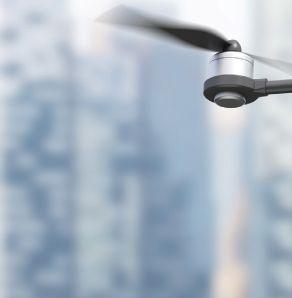
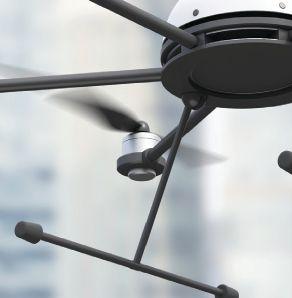
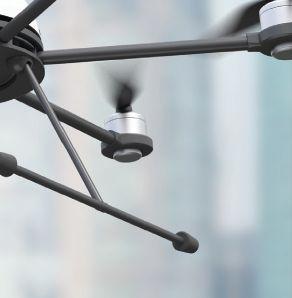

BY CHRISTOPHER M. FOLEY & TONY B. ROBINSON
Facility managers often use building enclosure investigations and evaluations to determine the condition of a façade/roof for safety and establish budgets for repairs. Depending on the confi guration of the structure, access to perform an investigation can be challenging, especially with steep-sloped roofs, steeples/ spires, multistory buildings or facilities in urban settings. Existing methods to access a façade include the use of aerial lifts, swing staging, scaff olding or rope access. Each of these methods is time consuming, costly and oftentimes restricts pedestrian/tenant access in and around the building. A 21st century alternative to the traditional methods of building enclosure evaluation is to incorporate the use of aerial drones. A detailed visual survey of building enclosures can provide suffi cient information as to the condition of the exterior building components including, but not limited to, the quantity, type and locations of defi ciencies. For instance, a drone survey of a slate roof can provide the same information as a visual inspection from high-reach equipment at a fraction of the cost. Drone zooming capabilities can provide information on the condition of mortar and sealant joints, extent of masonry spalls or cracking, displacement of façade components and overall condition of roofi ng systems.
In the U.S., the Federal Aviation Administration (FAA) recently adopted procedures and certifi cations for using Unmanned Aircraft
Systems (UASs)/drones for commercial use. UASs/drones capture real-time, high-resolution video and photographs, therefore reducing the time and money it takes to perform a typical evaluation. Drones can quickly elevate and fl y to the highest points of a building in a matter of minutes. The ability to view these heights from the safety of the ground is a tremendous advantage for the observer and lessens liabilities for the owner.

HISTORY OF DRONES
The fi rst recorded use of a drone was in 1849 when Austria attacked the Republic of Venice with explosive-laden unmanned balloons directed into the wind. Less than two decades later in the U.S. Civil War, balloons were utilized for reconnaissance missions. In 1896, Samuel P. Langley developed a range of steam-powered aerodromes, unpiloted aircraft that were fl own successfully along the Potomac River near Washington, D.C., USA.
The term “drone” originated in 1935 from the British produced unmanned radio-controlled aircraft that were used as anti-aircraft practice targets. Reconnaissance drones were fi rst deployed on a large scale by the U.S. Air Force in the Vietnam War. They acted as decoys in combat, launched missiles against fi xed targets and dropped leafl ets for various operations. Drones continue to be used in military operations, but their use has expanded to hobbyists and professional civilian industries.
HOW DO UASS/DRONES OPERATE?
UASs/drones work through a system of sensors. They are remote-controlled vehicles made up of a light composite material that allows them to maneuver easily and reach high altitudes. UASs/drones have three parts: the drone itself, the control system and lithium-based batteries. They are equipped with infrared cameras and global positioning systems (GPS) and are controlled by remote ground control systems (GSC) or ground cockpit. The on-board computer uses data from gyroscopes and accelerometers at each rotor to determine orientation and position. To follow is a general description of the maneuvers used by the ground cockpit to control a drone:
• ROLL | angles the drone’s body to the left or right to move the aircraft side to side. While always looking forward, this is the equivalent of tilting the head to the left of right. • PITCH | angles the drone’s nose up or down to move the aircraft forward or backward. This is the equivalent of looking up or down. • YAW | changes the direction the drone faces by turning the aircraft to the left and right on the vertical axis. This is the sameasturning the head to the left or right. same as turning the head to the left or right. FAA RULES FOR OPERATING UASS/DRONES
In 2015, the FAA created 14 CFR Part 107 to provide rules for drone use due to safety concerns for both hobbyists and commercial pilots, but only commercial pilots are required to become certifi ed. In 2021, the FAA updated the rules to better accommodate commercial use. All drones must be registered with the FAA, whether it is used for hobby or commercial use. The rules for operating an unmanned aircraft also depend on where it is fl own. Commercial UAS pilots will typically operate in Class G Airspace, which extends from the surface to the base of the overlying Class E airspace (14,500 feet). A remote pilot will not need air traffi c control authorization to operate in Class G airspace. Class G airspace is uncontrolled, meaning that the FAA does not provide services in this airspace, nor do they provide any aircraft tracking or redirection. This is a free zone; therefore, UAS operations are unrestricted.
WHAT ARE THE BENEFITS OF USING UASS/DRONES?
The images that result from UASs/drones are easy to share and interpret. They provide an overview of the building that is often superior to a report collected by sampling individual data points through manual inspection. Some drone service providers are also able to stream drone imagery in real time (i.e., the facility manager can assess conditions from the ground by observing the drone oper-
PILOT REQUIREMENTS
AIRCRAFT REQUIREMENTS
LOCATION REQUIREMENTS
OPERATING RULES
EXAMPLE APPLICATIONS
LEGAL OR REGULATORY BASIS
RULES FOR OPERATING DRONES/UASS
FLY FOR FUN
No pilot requirements
Must be less than 55 lbs. Aircraft does not need to be registered
5 miles from airports without prior notifi cation to airport and air traffi c control FLY FOR COMMERCIAL USE
Must have Remote Pilot Airman Certifi cate Must be at least 16 years old Must pass TSA vetting
Must be less than 55 lbs. Must be registered if over 0.55 lbs. Must undergo pre-fl ight check to ensure UAS is in condition for safe operation Must have a Remote ID
Class G airspace*
Must always yield right of way to manned aircraft Must keep the aircraft in sight Must follow community-based safety guidelines Must notify airport and air traffi c control tower before fl ying within 5 miles of an airport Must not be physiologically impaired
Educational or recreational fl ying only
Public Law 112-95, Section 336 —
Special Rule for Model Aircraft FAA Interpretation of the Special Rule for Model Aircraft Must keep the aircraft in sight Must fl y under 400 feet (elevation) Must fl y at or below 100 mph Must yield right of way to manned aircraft Must not be physiologically impaired
Flying for commercial use (e.g., providing aerial surveying or photography services) Flying incidental to a business (e.g., doing roof inspections)
Title 14 of the Code of Federal Regulation (14 CFR) Part 107
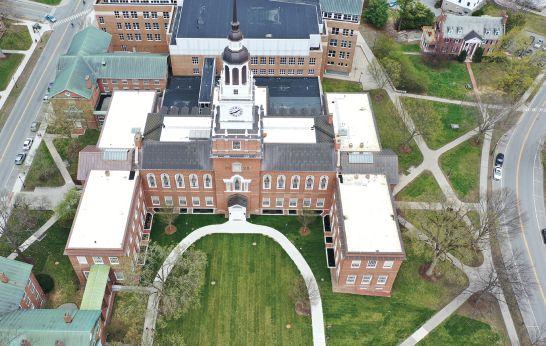
ator’s monitor). The drone can also be deployed very quickly and capture the necessary footage in hard-to-reach places much faster than traditional methods. A typical drone fl ight can be completed within a couple of hours depending on the size of the building. • Avoids expensive and traditional access methods • Reduces inspection costs • Less down time (for relocation and or breakdown of swing staging, scaff olding, and/or aerial lifts) • Can access areas that could not previously be reached • Highly controllable cameras • Data can be immediately downloaded to use in reports • High-quality video and images of building enclosure defects • The drone’s IR camera can locate potential moisture in roofs and potential thermal leakage within the building enclosure (roof, walls, windows)
Drones are also eff ective at evaluating buildings and property after a major weather event. They are helpful in quickly assessing damage to facilities and are widely used to assist insurance and utility companies. In 2017, the FAA issued 137 authorizations to local, state and federal agencies to support the Hurricane Harvey recovery. WHAT ARE THE LIMITATIONS OF UAS/DRONE TECHNOLOGY?
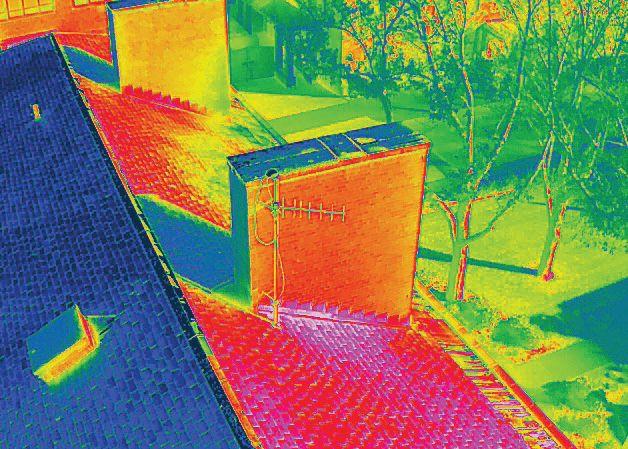
The major limitation is weather. Drones should not be operated in stormy, windy or extremely cold weather. The wind speed limit is 20 mph. When operating a drone, the pilot must not operate out of the drone’s line of sight. A professional enclosure consultant and/or engineer should interpret and analyze the collected data.
HOW DOES THE COST OF A UAS/DRONE EVALUATION COMPARE TO OTHER ACCESS METHODS?
Drones can be deployed very quickly and capture the necessary footage in hard-to-reach places much faster than a human. The table below compares the cost of drones to other access methods.
Drone technology has revolutionized traditional property condition assessments. Using high-resolution videography and photography, drones off er a safe, quick and cost-eff ective visual method to evaluate a wide range of properties and facility types. Consider using drones as the fi rst option for inaccessible areas and logistically diffi cult sites. Drones have not yet taken the place of hands-on inspections of facades as mandated by many municipal ordinances; however, they are an invaluable tool to expedite and reduce overall costs of such evaluations.
FMJ
COSTS OF ACCESS METHODS
(FIGURES IN U.S. DOLLARS)
AVERAGE COSTS FOR EVALUATION USE LIMITATIONS
BINOCULARS $150 No ability to capture images observed for later use. AERIAL LIFTS $1,500 –$5,000+ per day (not including operator) Costly, coordination with facility operations critical, potential formechanical failure. Tremendous attention to safety.
SWING STAGING $2,000-$3,000 per drop (not including operator) Costly, coordination with facility operations critical, potential for mechanical failure. Delay in observation due to mobilization.
Tens of thousands to install and remove
SCAFFOLDING $1,500+ per day rental Very costly, delay in observation due to mobilization.
DRONES The average cost for a UAS survey is approximately FAA regulations, battery life, weather (wind, rain, etc.) $1,500-$2,000 per day. It takes approximately 1-3 days depending upon size and confi guration.
Over the past two years, how buildings are being used and how people move through them have drastically changed. Waves of shifting patterns between social distancing, office closures, remote working and isolation have caused headaches for facility managers.
While the COVID-19 pandemic has created its own challenges, the need for flexible and efficient movement of people through buildings is, of course, not just tied to the current health and safety landscape. For decades, high-rise buildings have become increasingly taller, with more floors and tenants to serve. This has led to traditional elevator systems becoming less efficient in distributing passengers to their destinations.
Traditional elevator systems come with limitations – queuing up outside the elevator doors, sharing a cab with strangers, uncomfortable silence, patiently waiting for your floor to ding – not to mention the delay and frustration that comes with an elevator being out of service. The classic elevator setup does not always meet the needs of the modern property and its busy tenants. This is what led to the development of the intelligent elevator distribution system known as Destination Dispatch.
Sometimes referred to as Destination Control, Destination Dispatch was designed to improve life for building owners, facility managers, tenants and visitors, and the system’s benefits touch every element of everyday elevator travel. At its core, it is a traffic control system that directs each elevator to the location where it is put to its most efficient use at any given moment. The technology is typically used in commercial, multi-elevator buildings. It offers an opportunity to not only adapt to changing health and safety guidelines, but also allows for the flexibility needed to efficiently handle peaks and valleys of traffic throughout the working day.
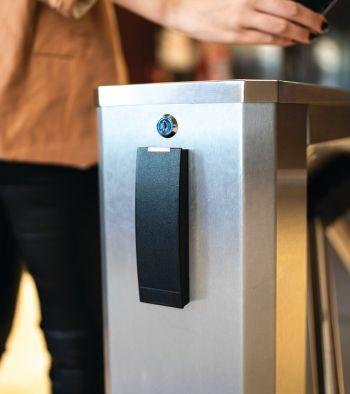
HOW DOES DESTINATION DISPATCH WORK?
Smart Routing A Destination Dispatch system analyzes the elevators’ traffic data and learns from it, using the information to improve traffic flows. This reduces the estimated travel time between 30 and 50 percent compared with traditional systems.
Passenger Grouping The system groups elevator passengers based on their destination floor. This means that the individual can enter an elevator without having to press any buttons inside the cab, knowing that they will be moved quickly to their destination floor without waiting for people to get on and off. Buttonless Calling A Destination Dispatch system uses input devices such as keypads, touch screens or contactless proximity cards. All floor selections are made before the passenger is guided to the appropriate elevator, which travels directly to the correct destination. Per code, for ADA compliance, the system can include a hardware button to open the door and allow voice commands.
BENEFITS OF DESTINATION DISPATCH
1. Energy cost savings The system enables significant energy savings due to more efficient distribution of passengers, a reduced number of floorto-floor runs, and fewer energy-demanding stops and starts.
2. Increased capacity Buildings can increase the handling capacity of their elevators without having to increase the number of elevators, replace the existing cars or change their speed.
3. Managed access and safety With a destination system, tenants can expand their space anywhere in the building — not necessarily on adjacent floors. The system can route people and manage their access using key cards or codes, often integrating with security systems like gates or turnstiles.
4. Communicate smarter With the use of central communications screens, the building can share enhanced communications with passengers about building management updates, safety issues, or staggered arrival and departure times.
5. Improved tenant satisfaction Fewer stops and shorter travel times lead to reduced stress during heavy traffic periods. This promotes tenant satisfaction and can help to enhance the reputation of the building — increasing the market value of the property and rental space.
6. Reduced construction costs For new construction, a destination system allows for more efficiently configured elevator banks, with potentially smaller and fewer elevators and lobbies. With a smaller building core, it is possible to reduce construction costs while increasing rentable space and tenant capacity.
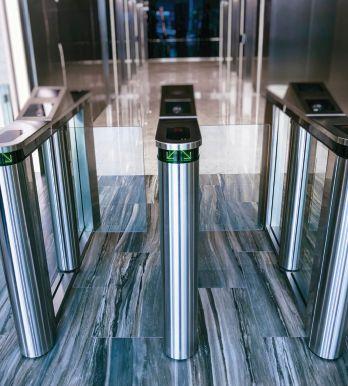
7. Improved COVID-19 safety The system naturally leads to reduced crowding in elevator cars, and passengers do not need to shuffle around to access the button panel inside the elevator. This provides enhanced safety and confidence for passengers who want to limit proximity to others.
8. A customized passenger experience For passengers with impaired mobility, a destination system offers better accessibility as it can allow them to move directly to a designated elevator. The system can also be set up with customized features such as a VIP or pet service, using individual passenger preferences programmed into their keycards.
IS DESTINATION DISPATCH RIGHT FOR YOU?
There are many factors to take into consideration for any building looking to improve elevator efficiency and capacity. It is important to establish that a building would benefit from the features the system offers. Destination Dispatch is well suited to mid- and high-rise office towers and buildings that attract consistently heavy traffic to specific floors. Examples include medical offices, fitness centers, renters of temporary office and conference space, restaurants, and roof-top bars or observation decks.
However, in some situations, Destination Dispatch is not ideal. A low-rise, single-tenant structure would not experience the efficiency benefits of the system. A high-rise property with traffic patterns of a hotel or public building is often not a great candidate either, as these types of buildings tend to serve a heavy volume of transient, infrequent visitors who are unfamiliar with the building and would likely be confused by a non-traditional elevator system.
Each building will require a detailed traffic analysis to determine what specific destination solution would be suitable. The analysis looks at the location, height and size of the building, and whether it is commercial, residential or mixed-use. It would also consider the number of elevators and banks, the age and functionality of the current elevator equipment, the number and nature of tenants and their business activities, and the building’s patterns of elevator traffic and intensity. An experienced elevator maintenance company or consultant will be able to review this assessment and help the facility management team choose the right type of destination solution.
THE DIFFERENT DESTINATION SYSTEMS Not all elevator destination solutions are made equal. A full Destination Dispatch deployment is a large undertaking that requires significant investment. There are alternative elevator intelligence upgrades to consider.
ETA (ESTIMATED TIME OF ARRIVAL) ETA is a control system that analyzes various factors to determine which elevator is best to answer the hall call, in the fastest possible time. These factors include elevator position, speed and direction, the location of the call and destination.
LOBBY BOOST A Lobby Boost system uses destination input devices at the lobby level to help provide optimized travel from the lobby during periods of high traffic while retaining traditional up and down hall calls at the other floors. This allows lobby passengers to select their floor and be sorted in order of destination. Although this could mean that passengers end up waiting slightly longer in the lobby, they will spend less time in the elevator and reach their destination faster. This solution is ideally suited to peak traffic times such as morning arrivals, afternoon departures, lunchtimes and early closing times before holidays.
FULL DESTINATION The Full Destination Dispatch is the most common configuration providing the maximum benefits over time. For this solution, input devices are placed on all floors serviced by the elevator, allowing the system to group all riders traveling to the same floor.
HYBRID In a hybrid destination model, input devices are located only on certain floors, with up and down call buttons on other floors and inside the elevator.

ARE TENANTS READY FOR A DESTINATION PROJECT?
For most elevator passengers, the benefi ts of an upgrade to Destination Dispatch will be immediately recognizable: far less crowding, more orderly traffi c and quicker arrivals to their destinations. However, even though the system is carefully designed to be user-intuitive, some passengers may initially fi nd it confusing. It is important to communicate the changes and any disruption to tenants — before, during and after installation. FMs will need to place explanatory signage in the lobby, and post instructions at landings and in communal areas. If FM has an email database or newsletter list for tenants, that could also be a great channel for sharing instructional videos or guide documents.
Every conversion to a destination system is a custom project and requires a thorough, detailed assessment to establish the suitability of building and elevator equipment. However, every opportunity to upgrade means countless benefi ts waiting to be captured — for both the building and tenants.
FMJ
Åsa Christina Magnusson, senior manager marketing and communications, American Elevator Group, is a skilled marketing professional with a background in serving high technology and manufacturing industries with strategic marketing insight and content.
• Stops Flooding due to Frozen, Vandalized, or Improperly
Maintained Fire Sprinkler System Auxiliary Drains • For Dry and Pre-Action Fire Sprinkler Systems • Compatible with Compressed Air and Nitrogen Systems • No Power Required • Automatically Resets • Allows Condensation to be
Drained Normally • Retrofit onto Existing Drains • Made in the USA
SCANFOR MOREINFO
www.agfmfg.com
Last year concluded with little more order to it than 2020. Organizations announced hard dates for a return to the office and quickly found themselves at odds with reluctant employees. Meanwhile, COVID-19 had plans of its own — organizations had to change their strategies and reprioritize to meet both the needs of employees who were no longer happy with being put back in their boxes and a virus that could change the rules of the game at a moment’s notice. The need arose to reassess business requirements to champion a model that was both sustainable in a business sense and one in which the employee experience was paramount.
Flexible, remote or hybrid working is now formalized company policy rather than a temporary workaround. The shift to decentralized working models that embrace flexibility at their core — heeding external conditions and employee sentiments, rather than just the opinions of upper management — do better to guarantee long-term organizational resilience.
PUTTING EMPLOYEES BACK IN THE BOX
After the amount of hurdles organizations have had to jump over — government-mandated work-from-home orders, supply chain disruptions, a rapidly changing virus — they could be ready to compete at an Olympic level.
What were thought to be hard return-to-work deadlines around the second half of 2021 were pushed back once, then twice, until ultimately being put on ice indefinitely thanks to COVID-19 consistently moving the goal posts. It is not just a few small companies either. Big players such as Microsoft and Google have ditched deadlines to instead take an adaptive approach to situational developments. Employees said “no thanks” to a return to the office, citing concerns of health and safety, higher rates of productivity when working from home and a strong preference for this newly found flexibility.
For these reasons, organizations are realigning their strategy, building for long-term uncertainty by simultaneously championing workplace resiliency and radically improving the employee experience. These plans have given rise to a host of new working models that take resiliency to heart and do well to appease both employers and employees alike.
THE HUB-AND-SPOKE MODEL
The hub-and-spoke model is being adopted by some big names such as IT conglomerate Fujitsu who signaled they are already moving away from the conventional practice of working from a fixed office. Instead, employees are encouraged to choose where they want to work, be it their home, a main hub or a satellite office. The model will feature a streamlined headquarters (now with a 50 percent reduced footprint), hubs in larger metropolitans and multiple satellite offices spread across the islands of Japan for staff to work near home. This presents all the benefits of being in a structured office environment while cutting out the arduous commute.
Likewise, some of the U.K.’s largest banks such as Virgin Money and Metro Bank are converting their now less-frequented customer-banking branches into working space for corporate staff to acclimatize to long-term COVID-19 impact.
Decentralizing the workplace with hub-and-spoke is a growing trend because it can help mitigate concerns related to contracting COVID-19. For the employee, the benefits include the structure of the office, a reduced commute and a place to meet team members. Employees are together in smaller clusters, outbreaks can be limited and reduced commuting times can protect staff.
THE ACTIVITY-BASED WORKING MODEL
There are also organizations rolling out activity-based working (ABW); diverse and dynamic working spaces — such as quiet hubs, collaborative café areas or huddle rooms — that can be utilized depending on the working needs of the employee. By granting the


fl exibility of when, where and how they work, employees gain greater control over their working environments and the ability to personalize their journey throughout the offi ce. This high level of fl exibility gives employees an improved workplace experience, bolstering their resiliency and ability to deal with external changes, in turn boosting resiliency of their organizations.
ABW can present fresh challenges for even the most seasoned FM professional. Space requirements ebb and fl ow, so how do FMs fi nd the right mix? Without analysis in the background, it can be merely stabs in the dark. Increase desk space? Expand communal space? Subdivide meeting rooms into quiet hubs?
Employees’ concerns regarding returning to the offi ce:
35%
are concerned about contracting COVID-19
32%
are concerned with touching things that other people have touched
BOUNCING BACK: WHY BE RESILIENT?
Why is resiliency in the workplace so essential right now? Many successful organizations have (or had) well-established and eff ective protocols, ranging from defi ning overall business direction for the next fi ve years to something as trivial as clocking in and out for work. In times of stability, these measures are great; but once a crisis hits, the cracks quickly start to show.
Professor David Denyer of Cranfi eld School of Management in the U.K. defi nes resiliency as “The ability of an organization to anticipate, prepare for, respond and adapt to incremental change and sudden disruptions in order to survive and prosper.” How quickly can an organization get back on its feet after a crisis?
Organizational resilience is very much centered around employee resilience. It is up to the organization to actively support the employee so that in turn, they may respond to external adversity. They can respond in a positive manner, and in a way that helps the organization not only survive but thrive. As work and workplace fl exibility arrangements become offi cial policies, the ability to rebound becomes increasingly important.
30% are concerned with knowing whether to shake hands, fi st bump or touch elbows with others 20% are concerned with not having a permanent desk at the offi ce
Source: Glassdoor
Organizational resiliency requires input from diff erent stakeholders across all levels of the organization to be enacted successfully. It is not just staff with concerns on their minds, it is a tough time for FMs too. Never has the spotlight shone so brightly on the workplace environment as during the pandemic — employees are more cautious, even fearful, of the spaces they inhabit and who they share space with.
Fortunately help is at hand, with organizations realizing these concerns and acknowledging their duty of care by off ering increased funding to support more resilient workplace models. In a remote work survey by PwC, U.S. executives signaled they are already, or will be, planning new investments to support hybrid work.
PRODUCTS OF THEIR ENVIRONMENT
When staff feel the workplace experience has been downgraded, it shows in their work and level of engagement. According to a survey by Glassdoor, while more than half of employees were “eager to return” to the offi ce in a fl exible manner, nearly 90 percent of employees expressed serious concerns about returning to the offi ce. This is aff ecting overall organizational resiliency, with the benefi ts of returning to the workplace wiped out by the potential risks. Furthermore, blanket return-to-offi ce mandates without paying due attention to these concerns could be highly detrimental to the workplace experience.
Planned increase in investment:
Conference room with enhanced virtual connectivity: 57%
Hoteling applications: 50%
Communal space: 48%
Unassigned seating: 45%


Much of this investment will likely be directed toward workplace technologies (such as scheduling, safety tools and sensors) to support these evolving, more resilient workplace models. It is a time of colossal change, and FMs should make their voices heard if they are not already, to take on a position of leadership, guiding FM choices and selecting models that help allay the concerns of a returning workforce and establish their organizations as highly resilient.
RESILIENCY-CENTRIC WORKPLACE TECHNOLOGIES
Spurred on by the outbreak, a host of technologies have truly come into their element with the power to make or break fl exible work models.
When utilizing a hub-and-spoke model, there is inherently a greater number, but smaller and more dispersed locations for FMs to oversee, which consequently incur a greater need for technologies. Scheduling and booking tools, for example, will better manage occupancy and avoid overcrowding a smaller venue. Furthermore, these systems must span the entire organization. Expecting employees to use a diff erent system or app for each satellite or hub location does not make any sense and hinders the collaboration it is trying to encourage.
The larger challenge for FMs may be overlooking the necessity for all hubs and satellite offi ces to be connected instead of each running their own smart building system. Room and desk booking systems, sensors, HVAC and so on, must communicate together. This highlights the importance of a unifi ed integrated workplace management system for all facilities in this model, or integration will be a major headache, and in a worst-case scenario leave systems in diff erent branches siloed. Imagine having to individually check each offi ce to fi nd a vacancy.
Recent usage statistics and data from space reservation systems and capacity sensors can quickly provide guidance in how space is being used correlated with how external conditions are changing habits. However, this can only be done in a meaningful way when data from all locations can be consolidated within a central platform for analysis to create a more accurate overview of utilization, then guide how adjustments should be made to meet actual space needs.
In an activity-based workplace, there are peaks and valleys in occupancy. Monday mornings can start slowly, peaking around midweek and tailing off by Friday. Going over capacity with not enough desks to satisfy staff needs becomes an issue — not to mention adequately observing social distancing. Desk booking systems and occupancy sensors can give live occupancy information, allowing an employee to secure a spot before they arrive at the offi ce and dissuading those without a reservation to come to the offi ce when capacity is already at its limit.
There are also concerns about touching things previously touched by someone else. This comes at a time when cleaning and sanitization protocols have never needed to be so stringent. When employees fear cross-contamination, shared desk space can be a source of anxiety for employees and aff ect their ability to stay productive in the offi ce. Tackling and reducing clusters and outbreaks is imperative for organizational resiliency. Data from desk booking devices and sensors can trigger notifi cations to cleaning teams that a reservation is complete and sanitization is necessary prior to the next occupant’s arrival. The occupant can be assured all surfaces and equipment have been sterilized. With added support for low-touch options such as touchless desk check-ins, extra unnecessary contact can be further reduced.
KEY TAKEAWAY
Choosing the right workplace model can bolster employees and improve their ability to bounce back during times of great uncertainty. FMs should seek essential technologies that facilitate these resiliency-enabling models. Executives have signaled they are willing to invest, but FMs must guide and help select the optimal model, then take charge of technology investment spending that off ers the best ROI and alleviates employee return-to-work concerns.
FMJ
John Wang is co-founder and CEO of IAdea Corporation, a company focused on transforming the world with digital signage technologies. IAdea's products deliver the nextgeneration Smart Workplace, Smart Transportation, and Smart Retail. Its innovations are licensed and distributed by leading brands globally. Large-scale digital signage deployments around the world are often built with IAdea technology. Wang led IAdea to receive several industry recognitions, including Red Herring's Asia 100 Award as an innovative and fast-growing company. In 2018 he was recognized by the Outstanding Individual Award at the Digital Signage Awards for his contribution in promoting uses of digital signage technology around the globe. He received his master's degree in computer science from the National Taiwan University.
References Denyer, D. (2017). Organizational Resilience: A summary of academic evidence, business insights and new thinking. BSI and Cranfi eld School of Management.
Environmental change is one of the greatest crises the world is facing. People and organizations are running out of time to limit the increase of the global temperature to 1.5 degrees above pre-industrial levels — a key goal think tanks, governmental agencies and scientists around the world say must be achieved to reduce the impact of climate change. Add the COVID-19 pandemic, and the goals become even more challenging.
As a result of these two seismic challenges, the workplace is evolving. To stay competitive as a building developer, owner and facility manager, meeting the challenges of individual consumers and society is crucial. Despite there being no one-size-fi ts-all approach, there are important steps that FMs can take as an industry to create more sustainable, healthy and fl exible buildings.
Buildings play a signifi cant role in limiting the devastating impact of climate change All eyes are on the issue of global warming, but there is much more work to do. According to the United Nations Environmental Project’s (UNEP) Emissions Gap Report 2020, “despite a brief dip in carbon dioxide emissions caused by the COVID19 pandemic, the world is still heading for a temperature rise in excess of 3 C this century — far beyond the Paris Agreement goals of limiting global warming to well below 2 C and pursuing 1.5 C.”
While a drop in CO2 emissions was the result of unsustainable conditions spurred on by the pandemic, it shows that reducing emissions (or at least preventing temperatures from rising further) is possible. The UNEP report’s fi nding is certainly a wakeup call, but it is encouraging to see that they state “a low-carbon pandemic recovery could cut 25 percent off the greenhouse emissions expected in 2030, based on policies in place before COVID-19. Such a recovery would far outstrip savings foreseen with the implementation of unconditional Nationally Determined Contributions under the Paris Agreement, and put the world close to the 2 C pathway.”
Some countries such as the United States have made additional commitments. Last year, the U.S. government announced a new target to achieve a 50-52 percent reduction from 2005 levels in economy-wide net greenhouse gas pollution in 2030. This builds upon the nation’s already established goal to create a carbon pollution-free power sector by 2035 and net zero emissions economy by no later than 2050.
There is an incredible need for public and private sector in every industry to work together, and those in the facility management industry must understand the role they play in meeting these goals. Against the backdrop of rising populations, urbanization and globalization in developing nations, considerable growth in construction and real estate is expected. Already consuming 40 percent of global energy annually, the global building footprint is expected to double by 2060, with energy expenditure growing by 50 percent.
Creating cleaner, safer indoor spaces is (and will continue to be) of great importance In March 2020, many workers went home and did not return to the workplace for more than a year. Some say they will never return. The offi ce as it was has changed. Expect the offi ce of the future to be transformed into new mixed-use buildings where fl exible spaces retrofi tted to meet new standards will become the norm.
In preparation for the return of employees, building and facility stakeholders have had to reexamine their strategies for improving ventilation and indoor air quality. Arc, the Center for Active Design and the International WELL Building Institute have all released guidelines for the greater good. Given the benefi ts and the spotlight cast on health and well-being, there will undoubtedly continue to be a new level of scrutiny and demand for health-centric building practices that did not exist prior to the pandemic.
Pulling together a game plan to meet sustainability and health safety goals What should FMs be doing now to meet sustainability and health safety goals? To help make the process smoother, here are three factors to consider:
1. Embracing electrifi cation. One of the biggest focuses in the building industry in the coming years will be on building electrifi cation. Gas, oil and propane used for



